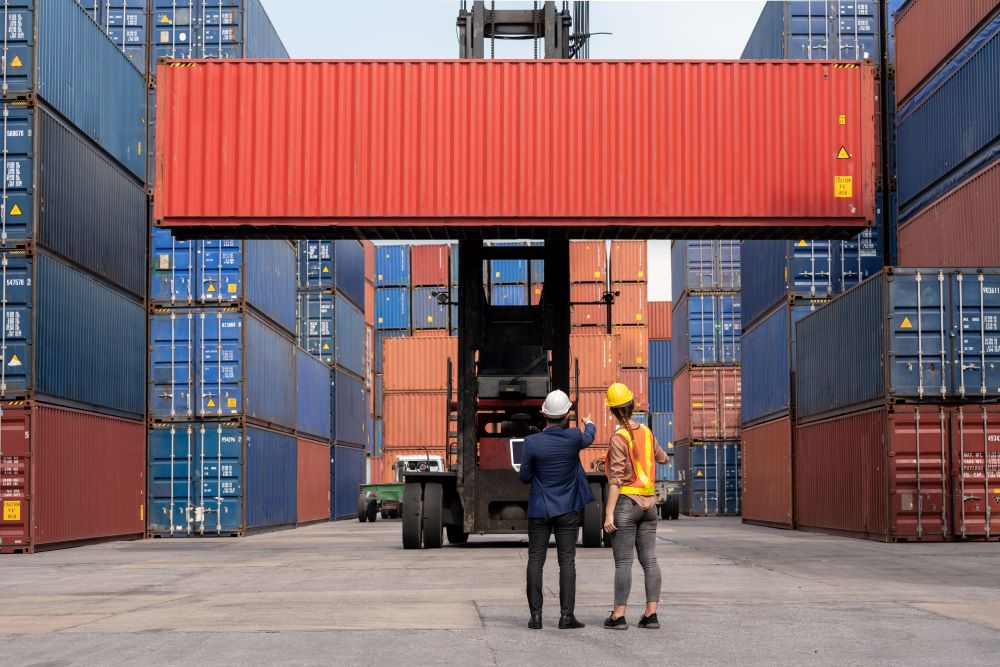
Unlike electronic load cells, hydraulic load cells use liquid pressure to convert physical force into data, so they are perfect for harsh environments where electricity or delicate components might fail.
This article will explain what hydraulic load cells are, how they work and their many industrial applications. You’ll also find out why they’re important in industrial weighing, how accurate they are and what affects their performance.
Whether you’re looking for load cells for a specific application or just want to understand their role in industrial settings, this guide will give you a clear and concise overview.
What are Hydraulic Load Cells?
Hydraulic load cells are rugged sensors that measure force or weight by using liquid pressure. A container filled with oil or water is compressed when weight is applied. This compression creates pressure proportional to the applied force or weight.
How Hydraulic Load Cells Work and Their Components
By measuring this pressure, the load cell calculates the weight of the load. Used in industrial processes, quality control and testing, hydraulic load cells work on the principles of hydraulics, force into pressure for accurate readings.
A hydraulic load cell is made up of:
- Load Cell Body: The outer casing, tough enough to withstand heavy loads.
- Liquid Chamber: A small sealed space inside the body filled with liquid.
- Diaphragm: A flexible but strong part that moves when weight is applied. Like a trampoline that presses down on the liquid.
- Pressure Gauge: The “reader” that measures the liquid pressure and converts it into a weight or force value.
How Do Hydraulic Load Cells Measure Weight?
Hydraulic load cells weigh loads by measuring the pressure in a liquid when a load is applied. Here’s how:
1. The Load is Applied
When you put a weight or force on the hydraulic load cell, it presses down on a diaphragm (a flexible but strong part inside the cell).
2. The Liquid Gets Compressed
Under the diaphragm is a chamber filled with liquid, oil or water. The pressure in this liquid increases as the load presses down on the diaphragm. The heavier the load, the more the liquid gets compressed, the higher the pressure.
3. Pressure is Measured
The load cell is connected to a pressure gauge or similar device that measures the increase in liquid pressure. This pressure is directly proportional to the weight of the load.
4. Pressure is Converted into Weight
Once the load cell is calibrated, the relationship between pressure and weight is established. The pressure reading is then converted into a weight value, which is either displayed on the gauge or transmitted to a display system.
Hydraulic load cells are a go-to solution for industries like mining and construction, where handling massive loads is a daily requirement. Their ability to withstand high pressure makes them ideal for situations where traditional electronic systems just can’t keep up.
Hydraulic Load Cell Applications
Hydraulic load cells are used in many industries for weight measurement and force detection. Here’s a few:
- Industrial Weighing: For keeping production lines accurate, hydraulic load cells measure materials in tanks, hoppers and batching systems, so every batch is just right.
- Heavy-Duty Vehicle Weighing: These load cells weigh trucks, their loads and even individual axles so everything stays safe and within legal limits.
- Agriculture: Farmers use hydraulic load cells to measure grain in silos and the loads on tractors so they can work more efficiently and not overload.
- Construction and Mining: Whether it’s minerals, ores or the load on excavators, these load cells can handle the toughest jobs in the harshest environments.
- Manufacturing: On the factory floor, hydraulic load cells ensure that products meet weight standards and monitor pressing or forming machines to maintain quality.
- Transport and Logistics: From shipping freight to balancing loads on train cars, these load cells keep cargo moving smoothly and safely.
- Safety Systems: Hydraulic load cells monitor the weight on bridges and towers to ensure stability and help cranes lift safely by preventing overloading.
- Energy Sector: In wind turbines, they measure the force on blades. In oil and gas operations, they weigh equipment and monitor pressure during drilling.
- Food and Beverage: From mixing ingredients to weighing products during packaging, these load cells ensure every bite and sip is as it should be.
- Harsh Environments: Built to withstand extreme conditions, hydraulic load cells work on ships, oil rigs and in high-temperature or corrosive environments.
Hydraulic load cells are great for environments where electricity is not available or is too dangerous to use. For example, remote locations, mining operations or offshore oil rigs where power sources are not available, hydraulic load cells are the perfect choice for weight and force monitoring.
How Accurate are Hydraulic Load Cells?
Hydraulic load cells are accurate for most industrial applications but accuracy varies depending on the design, application and environmental conditions. Here’s a summary of their accuracy:
Hydraulic load cells are accurate to 0.1% to 0.5% of full scale. So, for a 10,000 kg load cell, the reading could be ±10 to ±50 kg.
For most industrial applications like weighing large tanks, trucks or silos this is fine.
Factors that Affect Hydraulic Load Cell Accuracy
- Calibration: Calibration is key to accurate weight measurement. Hydraulic load cells need to be calibrated regularly to maintain accuracy over time.
- Environmental Changes: High humidity, dust, vibrations or corrosive atmospheres can also affect hydraulic load cell accuracy and performance.
- Temperature Changes: Hydraulic load cells are less affected by temperature changes than electronic load cells but extreme conditions can still affect the reading.
- Pressure System Integrity: Leaks in the hydraulic system can reduce accuracy by affecting pressure levels.
- Load Distribution: Uneven weight on the load cell can affect accuracy. Even load application helps to maintain precision.
- Maintenance: Regular inspection and maintenance is critical. A well-maintained hydraulic load cell will last longer.
Accuracy in hydraulic load cells is not just about calibration; it’s also about the integrity of the whole hydraulic system. Regular inspection of the liquid chamber and diaphragm is important as wear and tear on these components can affect performance.
Expand Your Knowledge
Hydraulic load cells are sufficiently accurate for most industrial applications, with an accuracy range of 0.1% to 0.5% of full scale. While they may not offer the same level of precision as electronic systems, they are rugged, reliable, and don’t require electricity, making them an ideal choice when practicality is prioritized alongside accuracy.
Interested in learning more about hydraulic load cells and their applications? We offer consultations to help you choose the right load cell for your project and can guide you through the calibration and maintenance processes to ensure optimal performance. Contact us today to discuss how hydraulic load cells can improve your operations!
Curious about different types of load cells, their uses, and how to ensure they perform at their best? Head over to our blog for an array of articles covering everything from selection to calibration and maintenance.


